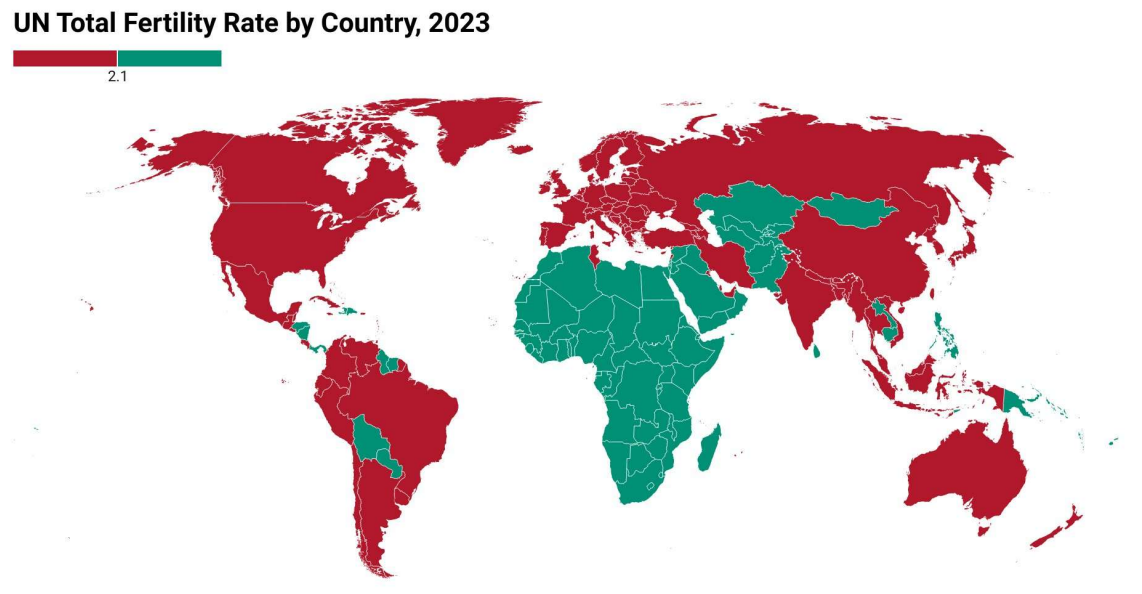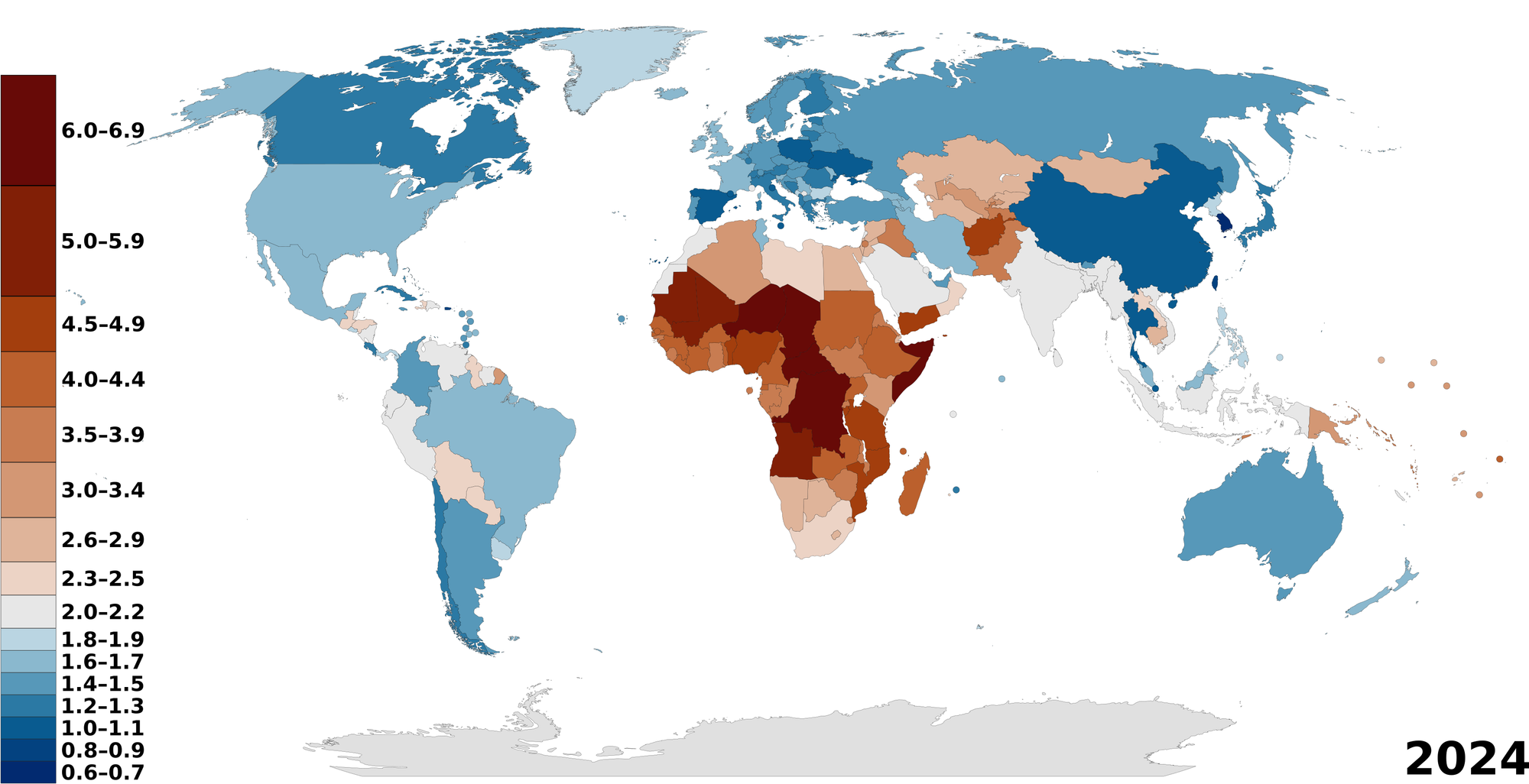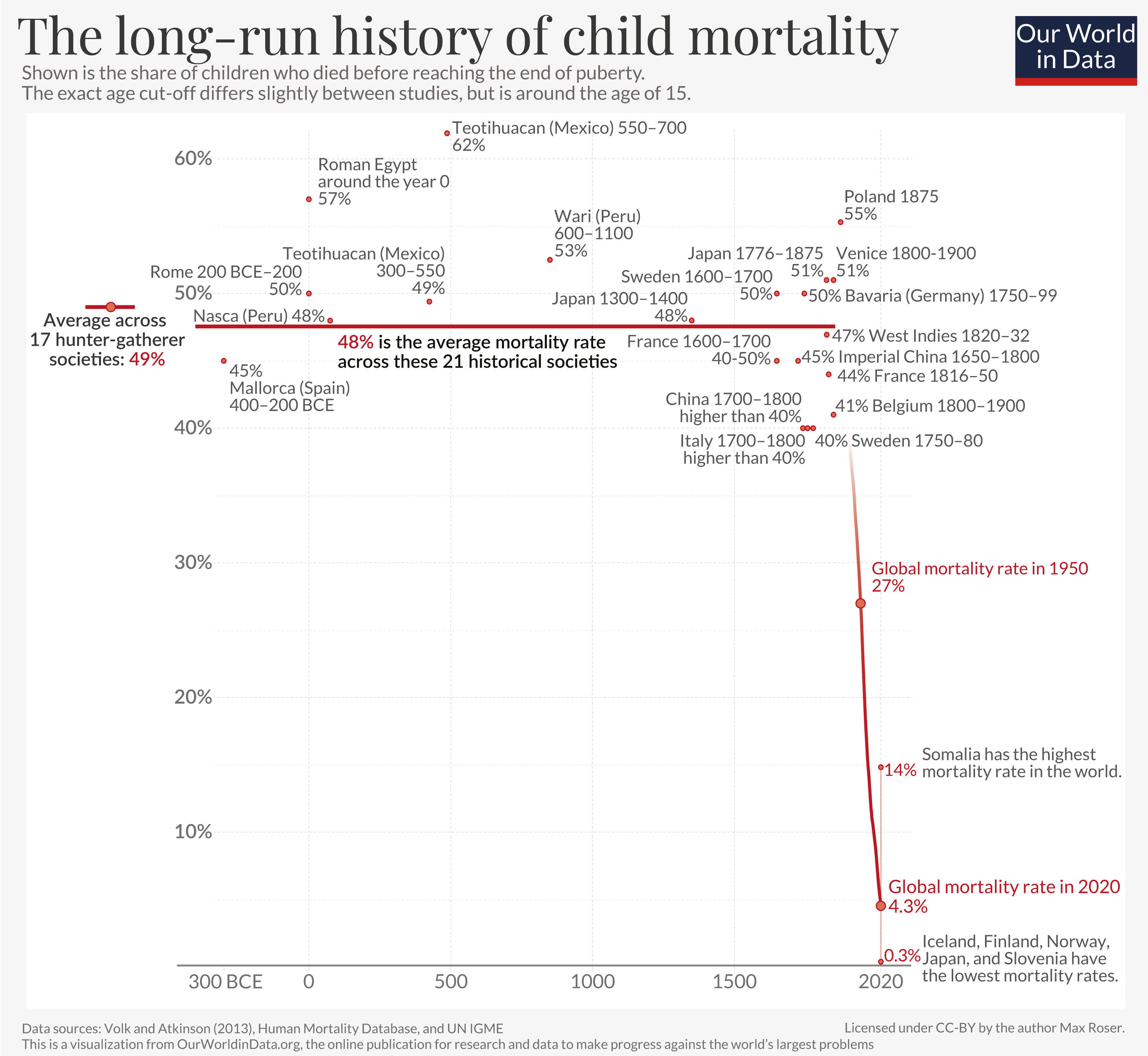Can Anything Logically Be Done About Fertility Collapse?
Navigating the most pessimistic and optimistic outlooks for tackling demographic decline.


I cannot provide this important Bitcoin and Macro analysis without you.
Please consider supporting independent content!
The world faces a slow-motion crisis of its own making: fertility rates are plummeting, and the global population will soon age rapidly—then shrink. An estimated 94.3% of global GDP comes from countries with below-replacement fertility rates. Even if population growth limps along for a few decades in low-GDP countries, aging societies in wealthy nations threaten to collapse the global economy.

This crisis poses myriad challenges—reverse network effects, collapsing welfare systems, ever-falling consumer demand, crashing credit markets, and progressive societies becoming regressive—which I explored in a previous post. Here, I focus on a pressing question: Can anything logically be done to reverse fertility collapse?
I recently watched this discussion between economist Robin Hanson and demographer Daniel Hess (@MoreBirths on X). Hanson argues that fertility decline is an intractable problem, doomed to drag civilizations into decline. Hess, conversely, believes that combining multiple small-scale strategies could yield a workable solution and save the world from civilizational effects.
Demographic Black Pill
For decades, governments have tried to reverse falling birth rates through cash incentives, tax breaks, extended parental leave, subsidized childcare, and campaigns promoting motherhood. All have failed to meaningfully raise fertility, and all gains are quickly reversed.
Historical precedent paints a grim picture: civilizations like ancient Greece, the Western Roman Empire, and the Byzantine Empire suffered demographic decline—including low fertility among elites—as a factor in their downfall. If neither autocratic empires nor modern democracies have succeeded, why should we believe a solution exists?
The “black pill” perspective, as presented by Hanson, accepts demographic decline as inevitable. Societies must brace for a long slide into civilizational decay, marked by shrinking economies and aging populations. Hanson points to feedback loops like innovation slowing with fewer young minds sparking ideas, and the fact that no civilization in history has successfully reversed a fertility collapse.

Futurist Samo Burja, though not black-pilled on fertility, shares related concerns. His concept of “intellectual dark matter”—the tacit knowledge embedded in people and passed between generations—can quietly erode. A skilled trade may rely on a few aging craftsmen. Once they die, the process vanishes, and its absence ripples through the economy. Now imagine that kind of decay happening across thousands of systems over decades. As populations shrink, the surplus driving urban life—consumer choice, constant connectivity, global supply chains—will erode. What was once commonplace will become a luxury, or lost all together.
The black pill view concedes that cultural attitudes will shift—but only after we hit rock bottom. Civilizations with pro-natal values will replace those that collapse. This reversal won’t come from policy, but from survival. When labor becomes more manual, and status flows from biological reality rather than cultural constructs, societies will rediscover family and fertility. But that process could take centuries.
Uneven Decline
There are extenuating circumstances to Hanson’s fatalism. Most notably: the fertility crisis won’t unfold uniformly. Japan and China illustrate two very different paths.

Japan is undergoing a graceful decline. It’s adapting: investing in robotics, prioritizing elder care, and redesigning infrastructure for an aging population. Its economy and population will shrink, but it’s more of a soft landing.
China, however, is hurtling toward collapse. Decades of the One-Child Policy, severe gender imbalance, and a fertility rate as low as 1.09 children per woman have rapidly inverted its demographic pyramid. Policy reversals and pro-natal campaigns have failed amid high youth unemployment, unaffordable housing, and waning trust. Unlike Japan, China lacks transparent institutions or social resilience. Its collapse, when it comes, will be sudden.
In an uneven collapse, talent will migrate toward regions less affected by fertility decline. Brain drain will accelerate collapse in some nations while reinforcing strength in others.

The Value of Being Late
Over time, healthier fertility countries may absorb lessons from those further along in the collapse, nudging their societies naturally toward pro-natal norms, with more information.
The unraveling of China and South Korea, within the next decade, will be a global wake-up call, followed by Europe’s struggles (e.g., Germany, Italy and Eastern Europe) in the 2030s. If these collapses are blamed on anti-natal culture rather than just poor planning, they could spark a pro-natal shift elsewhere. Economic hardship and the spectacle of failing societies may push marginally healthier nations toward family-friendly values. Being late to the crisis buys time to pivot.
Modern Weapons To Address Fertility Decline
There is no silver bullet for fertility collapse, but modern societies possess tools that earlier civilizations simply did not.
First, global communications allow for the rapid and efficient spread of pro-natal messaging. New narratives can be reinforced widely and consistently. A thousand years ago, news of civilizational events took weeks or months to circulate. Today, we will watch demographic collapse unfold in real time.
Second, we have far more data on human behavior, societal organization, and female mating strategies. We know what past civilizations attempted, what policies had marginal effects, and what consistently failed. We also better understand the proximal drivers of declining fertility—from urbanization to discriminatory elevation of female status in the economy.

Third, modern societies benefit from dramatically lower infant mortality. In the Roman Empire, replacement-level fertility was estimated at 5 to 6 births per woman. Up to 50% of children died before the age of five, and disease remained a serious threat beyond that. In essence, the Romans faced a different problem: how to encourage six births per woman when most mothers knew that three or four would not survive. Today, women only need to achieve their self-reported fertility desire of roughly 2.4 children per woman.
In short, modernity has given us a new toolkit and a smaller mountain to climb. Historical comparisons are instructive—but they are not as conclusive or damning as Hanson suggests.
Conclusion
Is Hanson’s fatalism or Hess’s optimism correct? Both have some truth to them. Fertility collapse is likely unstoppable in the short term—the next several generations will face economic stagnation, social regression, and in extreme cases, internal collapse. Hess’s “fertility stack” offers hope. Targeted interventions, amplified by modern tools, could soften the blow of fertility decline for some societies.
The crisis will unfold unevenly. Brain drain and broader migration patterns will favor countries still early in the process. These nations have the advantage of observing demographic collapse elsewhere and allowing their culture to adjust naturally.
New technologies provide us with new weapons. We can distribute pro-natal messaging efficiently, and advances in sanitation and medicine have drastically lowered child mortality. We face a more manageable demographic threshold, with better tools at our disposal.
I come down in the middle. It is politically and culturally impossible to implement a coordinated set of policies today to avoid the pain ahead—but we likely don’t have to suffer a complete civilizational replacement either. A third path exists, one where increasing hardship forces difficult decisions, coupled with deliberate use of modern tools.
Your support is crucial in helping us grow and spread my unique message. Please consider donating via Strike or Cash App or becoming a member today and get more critical insights!
Follow me on X @AnselLindner.
I cannot provide this important Bitcoin and Macro analysis without you.
Bitcoin & Markets is enabled by readers like you!
Hold strong and have a great day,
Ansel
- Were you forwarded this post? You can subscribe here.
- Please SHARE with others who might like it!
- Join our Telegram community
- Also available on Substack.
Disclaimer: The content of Bitcoin & Markets shall not be construed as tax, legal or financial advice. Do you own research.




